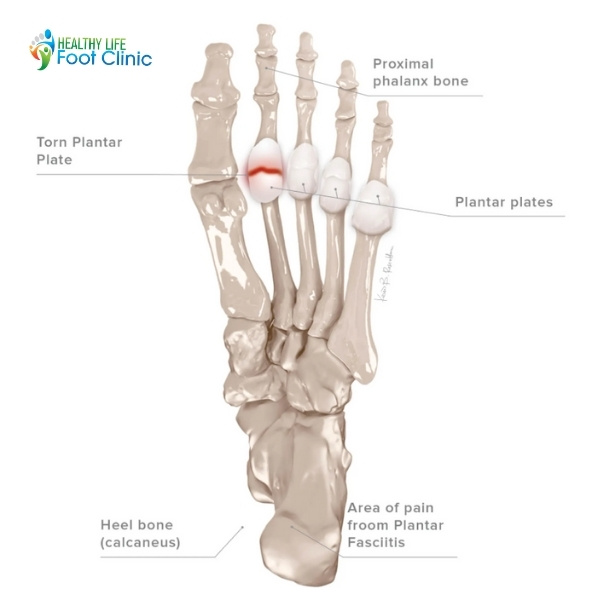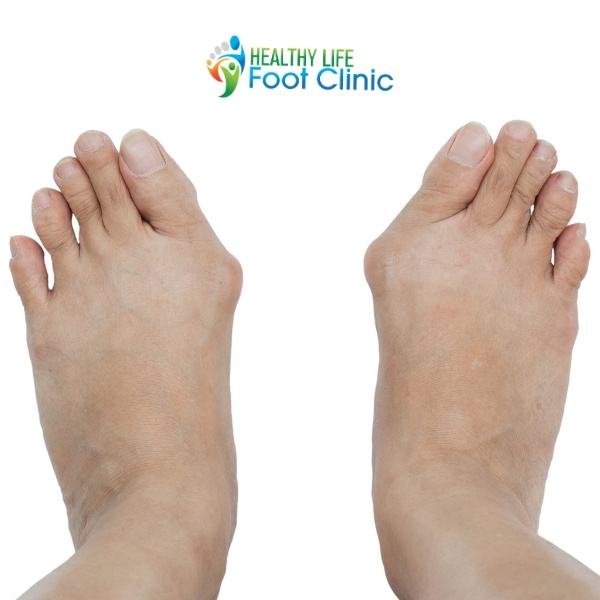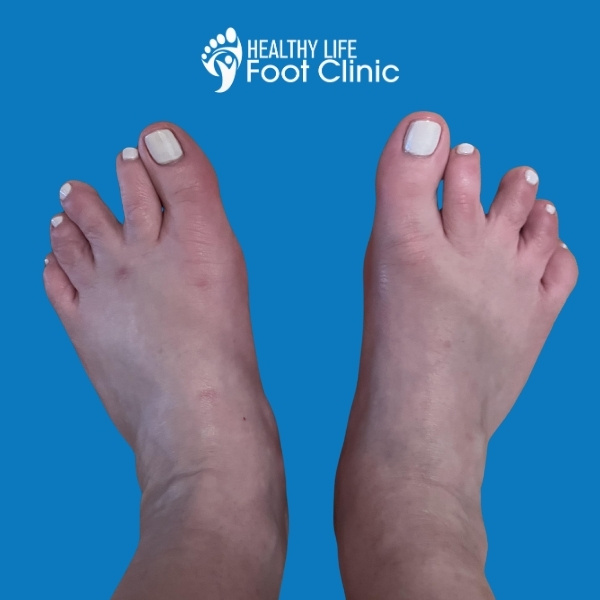At Healthy Life Foot Clinic, it’s not uncommon for clients to present with discomfort in the ball of the foot. One frequently seen cause is a tear in the plantar plate — a condition that can often be managed with conservative treatment options before considering surgical intervention.
What Is Plantar Plate Pain?
Plantar plate pain refers to discomfort beneath the forefoot, typically resulting from damage, overuse, or excess strain on the plantar plate ligament. It’s often described as feeling like a deep bruise under the ball of the foot, with symptoms that tend to worsen during weight-bearing activities. This type of injury is also seen regularly in athletes, particularly in sports that involve frequent jumping, landing, or sudden changes in direction — such as netball, football, soccer, basketball, and dance.

What Is the Plantar Plate?
The plantar plate is a strong, fibrous ligament that links the metatarsal bones to the base of the toes (proximal phalanges). It plays a key role in shielding the toe joint and metatarsal heads from excessive pressure. This structure helps prevent the toes from splaying apart, supports the stability of the metatarsophalangeal (MTP) joints, and serves as an anchoring point for the plantar fascia — assisting in toe plantarflexion when bearing weight.
Need a Podiatrist for Plantar Plate Pain?
Find Out More About Healthy Life Foot Clinic’s Care Guarantee
Contact Us or Book Online 24/7
What are the Symptoms of Plantar Plate Pain?
Plantar plate issues often present with a range of symptoms, which may include:
-
A sensation of bruising or tenderness in the ball of the foot
-
Swelling around the joints of the lesser toes, especially underneath the foot
-
Discomfort in the forefoot or across the top of the foot when standing or walking
-
Worsening pain when on tiptoes, jumping, or wearing shoes with elevated heels
-
More pronounced pain when barefoot compared to wearing cushioned footwear
-
Pain when extending or bending the toes upward
In more severe cases where the ligament has fully torn, the affected toe may begin to shift out of alignment, potentially leading to the development of a hammer toe deformity.

What are the Causes of Plantar Plate Pain?
Plantar plate pain typically results from repeated or excessive stress on the metatarsophalangeal (MTP) joints — the joints where the toes connect to the foot. Common contributing factors include:
-
High-impact activities like running, jumping, or pivoting, especially in sports such as football, soccer, netball, ballet, or sprinting. Runners who strike through the forefoot may also be more susceptible.
-
Underlying conditions like bunions or arthritis can increase strain on the lesser toe joints, raising the risk of plantar plate irritation.
-
Trauma, such as a hard landing from a height or uneven ground, may also trigger a plantar plate injury.
-
Foot biomechanics can play a major role. Abnormal loading through the forefoot caused by foot shape or function may lead to increased stress on the plantar plate ligaments.
For example:
-
A bunion (hallux valgus) can reduce the function of the big toe, forcing more pressure through the lesser toes and their joints. In advanced cases, the bunion itself can add further strain.
-
A flat or overpronated foot may limit the big toe’s ability to extend, shifting the push-off force to the lesser toes.
-
A high-arched (cavus) foot, especially when combined with tight calves, can lead to excessive forefoot pressure and increased plantar plate strain.
Another common factor is fat pad atrophy — the natural thinning of the cushioning beneath the ball of the foot as we age. If the bones under your forefoot feel more prominent, this may be a sign. Less cushioning means more force directed to the plantar plate with each step.
In rarer cases, direct impact to the forefoot — such as falling or landing awkwardly — can cause acute plantar plate injury.
How Is It Diagnosed?
Pain under the ball of the foot can stem from several different conditions — many of which share similar symptoms and are located in the same region. Because of this overlap, identifying the true source of pain often requires a thorough clinical assessment.
Our experienced Adelaide podiatrists take into account your symptom history, physical examination findings, and — when necessary — imaging such as ultrasound or MRI to confirm the diagnosis.
Some of the possible alternative causes of forefoot pain include:
-
Morton’s neuroma – a thickening of nerve tissue between the toes, often felt as burning or tingling
-
Bursitis – inflammation of fluid-filled sacs under the joints
-
Capsulitis – irritation of the joint capsule surrounding the toe joint
-
Synovitis – inflammation of the lining inside the joint
-
Metatarsal stress fracture – a small crack in the bone from repetitive stress
-
Fat pad atrophy – thinning of the natural cushioning under the forefoot
Determining the correct diagnosis is essential for effective treatment. Our podiatrists will ensure your care is tailored to the specific cause of your symptoms.

Need a Podiatrist for Plantar Plate Pain?
Find Out More About Healthy Life Foot Clinic’s Care Guarantee
Contact Us or Book Online 24/7
What Are the Treatment Options?
There are several effective ways to treat plantar plate pain, and the best option depends on how severe the condition is and how long it has been present. Your podiatrist will assess your symptoms and recommend a tailored approach based on your individual needs.
Strapping and Padding
Taping the toes and forefoot can help offload the affected area and reduce strain in the short term. Combined with strategic padding, this method can relieve pressure from the ball of the foot and provide immediate, though temporary, relief while longer-term treatment is planned.
Stretching and Strengthening Exercises
If tight calf muscles or imbalances are contributing to excessive forefoot loading, stretching may be recommended — particularly for the calves. Strengthening the small muscles within the foot (intrinsics) may also support better function and reduce strain on the plantar plate.
Footwear Assessment
Supportive footwear plays a crucial role in recovery. Runners or walking shoes with good cushioning and plenty of space in the toe box allow the foot to function without excess compression. Shoes with rocker soles are especially beneficial, as they reduce the need for the foot to push off through the ball, easing load on the plantar plate.
Avoid high heels or shoes that concentrate pressure on the forefoot. Need something more formal? We’re happy to recommend quality shoe stores in Adelaide that cater to podiatry-approved footwear.
Foot Mobilisation
Restricted movement in the feet or ankles can shift excess strain onto the forefoot. Mobilisation techniques help improve joint range and function. For example, limited ankle flexibility can force more motion through the toes during walking — increasing stress on the plantar plate. In these cases, restoring joint mobility can reduce pain and improve biomechanics.
Orthotics
Orthotic devices can be prescribed to better distribute pressure across the foot. If your foot structure or walking pattern is causing overload on the forefoot, custom orthotics can offload the plantar plate and support recovery. Your podiatrist will assess your gait and foot mechanics to determine the best design.
Advanced Orthotic Modifications
Custom orthotics can be further enhanced with modifications specific to plantar plate injuries:
-
A U-shaped cut-out or “U-pad” can offload a single plantar plate
-
A metatarsal dome placed just behind the toe joints can reduce pressure on two or more affected areas
-
A metatarsal bar may help spread the load more evenly across the forefoot when several joints are involved
Accurate placement of these additions is critical — incorrect positioning may worsen symptoms, so professional fitting is essential.
In some cases, a rigid insole may also be used to limit forefoot bending, particularly when paired with rocker-bottom footwear to allow propulsion without stressing the forefoot.
Shockwave Therapy (ESWT)
If your plantar plate pain has become chronic (lasting more than six months), extracorporeal shock wave therapy (ESWT) may help. This treatment stimulates blood flow and tissue healing in areas with poor circulation — like the plantar plate.
Shockwave therapy works best when used alongside offloading strategies, footwear changes, and strengthening. A typical course includes three sessions spaced 1–2 weeks apart. At Healthy Life Foot Clinic, all our podiatrists are trained in ESWT and may recommend it as part of your recovery plan for stubborn cases.

What is a Plantar Plate Tear?
A plantar plate tear is a more advanced and severe form of plantar plate injury. It occurs when the ligament partially or fully detaches from its attachment point at either the base of the toe (proximal phalanx) or the metatarsal bone. This type of tear can cause the affected toe to shift out of alignment, often drifting or lifting in a way that appears visibly abnormal.
As a result, complications such as hammer toes, corns, or callus formation may develop due to altered pressure distribution and joint instability. Compared to general plantar plate strain, a tear is usually more painful and may significantly affect walking and overall foot function, especially if left untreated.
Plantar Plate Tear Treatment
Managing a plantar plate tear often begins with similar strategies used for general plantar plate pain — including offloading, footwear changes, and orthotics. However, additional measures are typically needed to address the more serious nature of the injury.
One key technique is crossover taping, which helps hold the affected toe in a more natural alignment, reducing tension on the torn ligament and supporting proper healing. Your podiatrist may also recommend specific orthotic modifications or footwear to limit forefoot motion during walking.
If conservative care does not bring relief — or if the tear is particularly severe — surgical intervention may be considered. Surgery for plantar plate tears can be very successful in restoring alignment and function, but recovery involves a significant offloading period of up to 12 weeks. For this reason, exhausting non-surgical options first is generally recommended.
Need a Podiatrist for Plantar Plate Pain?
Find Out More About Healthy Life Foot Clinic’s Care Guarantee
Contact Us or Book Online 24/7

